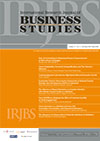Benefits and Challenges of Telework During The Covid-19 Pandemic
DOI:
https://doi.org/10.21632/irjbs.14.2.129-135Keywords:
Telework, Remote work, Work from home, Covid-19 Pandemic, HR PolicyAbstract
During the Covid-19 pandemic, the term work from home (WFH) has been introduced to refer to a work arrangement in which individual can complete their duties while they are at home. While most flexible work arrangements are a preference, work from home is mandatory. Therefore, the impact of WFH during the Covid-19 pandemic needs to be studied. The total respondent of this study is 337 employees, who are works at home during the pandemic. The results showed that the three main benefits employees might gain during WFH are flexibility, more time with family, and less travel time. On the other side, employees struggle to balance their personal and work life, access to websites or software, and limited devices and workspace. Most of the companies are not ready for the WFH scheme though some of them gave support to employees (e.g., quota subsidy). This research gave some essential suggestions for HR managers in designing remote work for the future.
References
Aropah, V., Sarma, M., & Sumertajaya, I.M. (2020). Factors Affecting Employee Performance during Work from Home. International Research Journal of Business Studies, 13, 2, 201-214. https://doi.org/10.21632/irjbs.13.2.201-214
Alexander, A., Smet, Aaron., & Mysore, M. (2020). Reimagining the postpandemic workforce. McKinsey Quarterly, 7. https://www.mckinsey.com/business-functions/organization/our-insights/reimagining-the-postpandemic-workforce
Adisa, T.A., Aiyenitaju, O., & Adekoya, O.D. (2021). The work–family balance of British working women during the COVID-19 pandemic. Journal of Work-Applied Management, https://doi.org/10.1108/JWAM-07-2020-0036
Autor, D., Mindell, D. & Reynolds, E. (2019). The Work of the Future: Shaping Technology and Institutions. 2019. Available online: https://workofthefuture.mit.edu/wp-content/uploads/2020/08/WorkoftheFuture_Report_Shaping_Technology_and_Institutions.pdf
Banerjee, D., & Rai, M. (2020). Social isolation in Covid-19: The impact of loneliness. International Journal of Social Psychiatry, 66, 525–527. https://doi.org/10.1177/0020764020922269
Eurofound. (2020). Living, working and COVID-19: First findings – April 2020. Dublin: Eurofound.
Kropf, B. M. (1999). Flexibility initiatives: Current approaches and effective strategies. Women in Management Review, 14(5), pp. 177-185.
Kniffin, K. M., Narayanan, J., Anseel, F., Antonakis, J., Ashford, S., Bakker, A. B., … van vugt, m. (2020). COVID-19 and the Workplace: Implications, Issues, and Insights for Future Research and Action. https://doi.org/10.1037/amp0000716
Maxwell, G., Rankine, L., Bell, S., & MacVicar, A. (2007) The incidence and impact of FWAs in smaller businesses. Employee Relations, 29, 138-161.
Perez, M., Sánchez, A., Carnicer, P., & Jiménez, M. (2005). The differences of firm resources and the adoption of teleworking. Technovation. 25, 1476-1483. https://doi.org/10.1016/j.technovation.2005.04.002.
Shwab, K. (2016). The Fourth Industrial Revolution, 1st ed.; World Economic Forum: Geneva, Switzerland. Society for Human Resource Management. (2015, April). SHRM Research: Flexible Work Arrangements. Retrieved from https://www.shrm.org/hr-today/trends-and forecasting/special-reports-and-expert views/Documents/Flexible%20Work%20Arrangements.pdf
Teleworking during the COVID-19 pandemic and beyond A practical guide. Geneva: International Labour Office, July 2020. ISBN 978-92-2-032405-9 (web PDF)
Wang, B., Liu, Y., Qian, J., & Parker, S. (2020). Achieving Effective Remote Working During the COVID-19 Pandemic: A Work Design Perspective. Applied Psychology, 70, 16-59. https://doi.org/10.1111/apps.12290
Williams, S.N., Armitage C.J., Tampe, T, & Dianes, K. (2020). Public perceptions and experiences of social distancing and social isolation during the COVID-19 pandemic: a UK-based focus group study. BMJ Open, 10. http://dx.doi.org/10.1136/bmjopen-2020-039334
Downloads
Submitted
Published
How to Cite
Issue
Section
License
Copyright (c) 2021 Susanti Saragih, Santy Setiawan, Teddy Markus, Peter Rhian

This work is licensed under a Creative Commons Attribution-ShareAlike 4.0 International License.
Journal Author(s) Rights
For IRJBS to publish and disseminate research articles, we need publishing rights (transferred from the author(s) to the publisher). This is determined by a publishing agreement between the Author(s) and IRJBS. This agreement deals with the transfer or license of the copyright of publishing to IRJBS, while Authors still retain significant rights to use and share their own published articles. IRJBS supports the need for authors to share, disseminate and maximize the impact of their research and these rights, in any databases.
As a journal Author, you have rights to many uses of your article, including use by your employing institute or company. These Author rights can be exercised without the need to obtain specific permission. Authors publishing in IRJBS journals have comprehensive rights to use their works for teaching and scholarly purposes without needing to seek permission, including:
- use for classroom teaching by Author or Author's institution and presentation at a meeting or conference and distributing copies to attendees;
- use for internal training by the author's company;
- distribution to colleagues for their research use;
- use in a subsequent compilation of the author's works;
- inclusion in a thesis or dissertation;
- reuse of portions or extracts from the article in other works (with full acknowledgment of the final article);
- preparation of derivative works (other than commercial purposes) (with full acknowledgment of the final article);
- voluntary posting on open websites operated by the author or the author’s institution for scholarly purposes,
(But it should follow the open access license of Creative Common CC-by-SA License).
Authors/Readers/Third Parties can copy and redistribute the material in any medium or format, as well as remix, transform, and build upon the material for any purpose, even commercially. Still, they must give appropriate credit (the name of the creator and attribution parties (authors' detail information), a copyright notice, an open access license notice, a disclaimer notice, and a link to the material), provide a link to the license, and indicate if changes were made (Publisher indicates the modification of the material (if any) and retain an indication of previous modifications.
Authors/Readers/Third Parties can read, print and download, redistribute or republish the article (e.g. display in a repository), translate the article, download for text and data mining purposes, reuse portions or extracts from the article in other works, sell or re-use for commercial purposes, remix, transform, or build upon the material, they must distribute their contributions under the same license as the original Creative Commons Attribution-ShareAlike (CC BY-SA).
This work is licensed under a Creative Commons Attribution-ShareAlike 4.0 International License.








